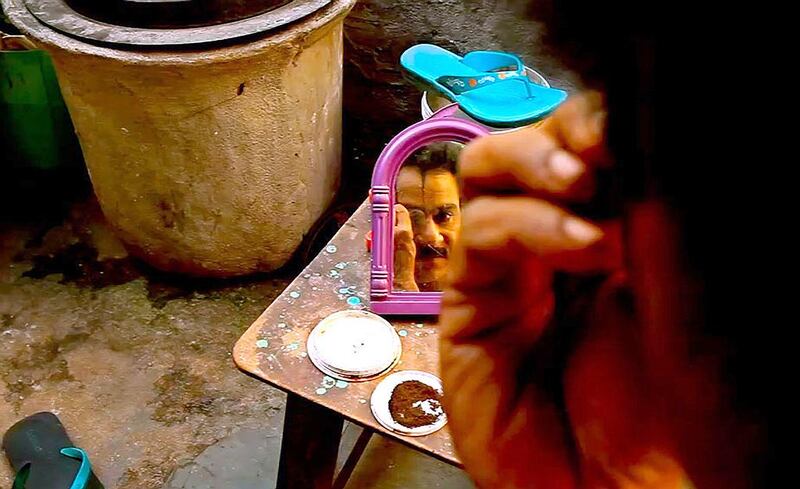For the Love of a Man is a documentary about fans. In particular, it is about the legions of devotees of the renowned Tamil actor Rajinikanth.
Born Shivaji Rao Gaekwad in Karnataka on December 12, 1950, he has been delighting cinemagoers across India since his film debut in 1975.
He has appeared in more than 150 movies, including Thalapathi (1981), Baasha (1995), Padayappa (1999) and Ra. One (2011). There are more than 150,000 fan clubs dedicated to him. In Tamil Nadu, he is treated like a deity and For the Love of a Man explores how fans express their devotion to him.
The film had its world premiere at the weekend at the Venice Film Festival, where I met its director Rinku Kalsy and her collaborator, producer and researcher Joyojeet Pal. Childhood friends, they grew up as neighbours. So why did they want to make a film about an actor’s fans?
“Actually it was Joyojeet’s idea,” says Kalsy. “This was while he was travelling a lot in Tamil Nadu, where he was teaching. He would sit and discuss fandom in Tamil Nadu with me, which is so different from Mumbai.”
Pal was intrigued by the way fans acted towards Rajinikanth.
“The fan worship, it does exist in other parts but nowhere in the extremity that it does in Tamil Nadu,” he says. “To us, the obvious thing was to go after the fans’ own words, to hear why they feel as they do.
“Obviously, there is a difference between what the fans say and what the few scholars or academics say, and their interpretation. But in the words of the fans, the biggest thing that keeps resonating is the idea of a brotherhood.
“This is, in some sense, also a story about India and social aspiration in the country. People who do this, they don’t necessarily have other ways to be seen in society.”
This is illustrated in the film through an interview with G Mani, a former gangster who now works as a peanut seller. He is also a leading member of a Rajinikanth fan club and talks about how journalists from around the world have come to interview him, to hear about his adoration of Rajinikanth.
His is just one story. Another is that of Kamal Anand, a mime artist who performs famous scenes from Rajinikanth films. Then there are brothers N Ravi and N Murugan, who own a sweet shop but devote all their free time to the actor. N Ravi was the first fan that Kalsy met.
"I was in Chennai and I read an article about him," she says. "This was in 2010, when Enthiran was released. The article described how Ravi climbed 1,300 stone steps on his knees, along with an entourage of 500 fans and when they reached the top, they performed a prayer ceremony for the box-office success of his new film."
That was just the tip of the iceberg. Kalsy then met the administrators of a fan website, featured in the film, who introduced her to other like-minded fans.
The director first became aware of Rajinikanth and his films when she was a young child.
"The first one I watched was called Geraftaar [1985]," she says. "It was a Bollywood film in which he plays a police officer and I remember I was little and I was really amazed with his style – taking a cigarette out of his pocket, throwing it in the air, shooting it and then catching it. I had not seen that in any Bollywood film before that."
But she was not a particularly big fan of Rajinikanth growing up.
“At that point he was just another actor,” she says. But things changed while making her film. “I think when I started spending time with the fans, while doing research and when we started shooting with them, I think it was through their love that I started kind of understanding him and falling in love with Rajinikanth – so I became a fan.”
Interestingly, Kalsy and Pal did not attempt to interview Rajinikanth for the film.
“I think it was a choice that we made that we wanted to stay with the fans,” she says. “We wanted to understand Rajinikanth through the fans.”
“He’s such a powerful personality that if you bring him into the film, it almost overpowers the film,” Pal adds.
“He’s in the film for 30 seconds and even that is such a big presence – so we wanted the film to be about fans, not about him.”
artslife@thenational.ae






